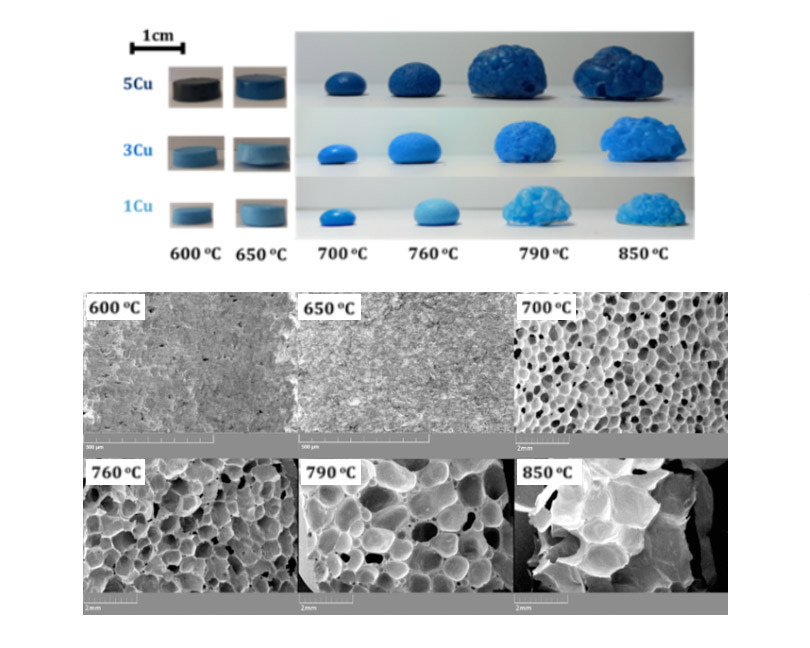Densification-crystallization behavior of biodegradable copper-doped modified 45S5 glasses
- 1 Department of Ceramic, Materials and Energy Research Center, Karaj, Iran
- 2 Department of Nano Technology and Advanced Materials, Materials and Energy Research Center, Karaj, Iran
Abstract
In the current work, modified 45S5 glasses containing different amounts of copper oxide (1, 3, and 5 weight ratios) were prepared using melting procedure and characterized for their physical properties after sintering at various temperatures. Characterization of the copper doped glasses was performed using various analytical techniques, including X-ray diffractometry, differential thermal analysis, and scanning electron microscopy. To this purpose, a systematic study was conducted on densification-crystallization of the copper doped glasses and optimizing sintering temperature. Differential thermal analysis revealed weak exothermic peaks located above 800 °C, corresponding to the crystallization temperature (Tc) of the studied glasses. This analysis suggests that copper oxide has a limited effect on the thermal properties of the modified 45S5 glasses. Densification behavior of glass specimens was studied at temperatures ranging from 600 to 850 °C. The optimal densification temperature was found to be 650 °C, respectively. The results indicated that the presence of copper ions in the structure of studied glasses results in the formation of porous structures after sintering. It seems that copper ions generate oxygen gas during sintering and promote the formation of a cellular foam structures.
Downloads
References

Copyright (c) 2023 Ahad Saeidi, Mojgan Heydari, Sara Banijamali

This work is licensed under a Creative Commons Attribution 4.0 International License.
Copyright
Authors are the copyright holders of their published papers in Synthesis and Sintering, which are simultaneously licensed under a Creative Commons Attribution 4.0 International License. The full details of the license are available at https://creativecommons.org/licenses/by/4.0/.
All papers published open access will be immediately and permanently free for everyone to read, download, copy, distribute, print, search, link to the full-text of papers, crawl them for indexing, pass them as data to software, or use them for any other lawful purpose without any registration obstacles or subscription fees.












